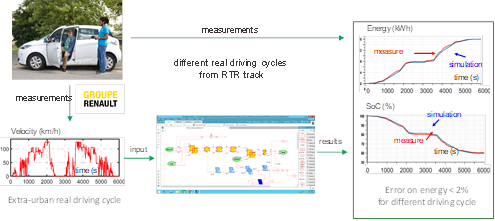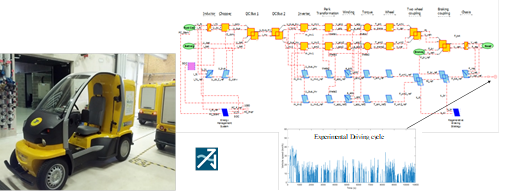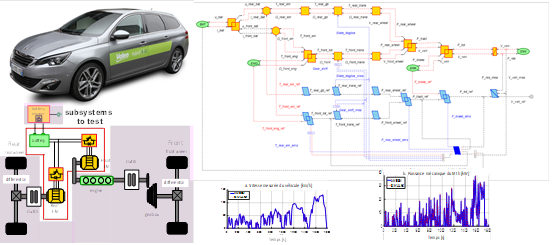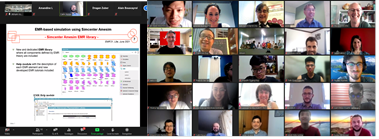PANDA has been organized in two main phases in terms of outputs: the simulation phase aims to propose virtual testing of the 3 reference vehicles; the Hardware-In-the-Loop (HIL) phase aims to propose real testing of subsystems of the Plug-in Hybrid Electric Vehicle (P-HEV).
To achieve the simulation phase, a new dedicated EMR-based library has been developed in Simcencer Amesim © thanks to a collaborative work between SISW and ULille. Then, the PANDA simulation cloud has been organized by SISW. Multi-level battery models have been developed in this cloud thanks to VUB, TUV-BT, ULille, Bluways and SISW. Multi-level e-drive models have been developed by UTCN, ULille, VEEM and SISW. All the models are thus capitalized on the PANDA cloud for both stand-alone and cloud-computing simulation.

The BEV (Battery Electric Vehicle) of RTR (Renault Zoe) has been simulated using the PANDA method and tools (cloud, EMR-based library and components models). Different model levels have been developed by SISW, ULille. Simulation results have been compared to real driving cycles provided by RTR. For the different driving cycles the accuracy in terms of energy consumption is greater than 98%. Such a results demonstrated the interest of the proposed method.

The FCV (Fuel Cell Vehicle) Mobypost of UBFC has also been simulated using the same PANDA method and tools. Different model levels has been developed by SISW, UBFC and compared to real driving cycles provided by UBFC from the Mobypost FP7 project. The simulation demonstrates an accuracy greater than 95% compared to the experimental test. This second study case demonstrated the ability of the PANDA method to switch to any vehicle topology.

The P-HEV of VEEM is a diesel vehicle retrofitted in hybrid vehicle based on an innovative low-voltage battery system. Different model levels has been developed by SISW, ULille and VEEM to develop an advanced Energy Management Strategy (EMS). In this case, the PANDA methodology is used in order to develop a new vehicle and specifically a low-consumption EMS. This last study case demonstrates that the PANDA methodology can be applied in the early development phase of vehicle design.

The simulation phase has been presented at the EMR’21 summer school (14-17 June 2021, Lille, hybrid mode) to the 169 attendees from 19 countries. A PANDA day has been focused on the PANDA methodology with 6 lectures from the partners on the concepts and simulation of the 3 study cases. Moreover 2 other lectures from PANDA has been presented during EMR’21. Finally during 3 days, some attendees have tested the PANDA simulation cloud using the EMR-base library of Simecenter-Amesim © under the management of SISW and ULille. The simplest model of the BEV of RTR has been taken as a simulation training example.
